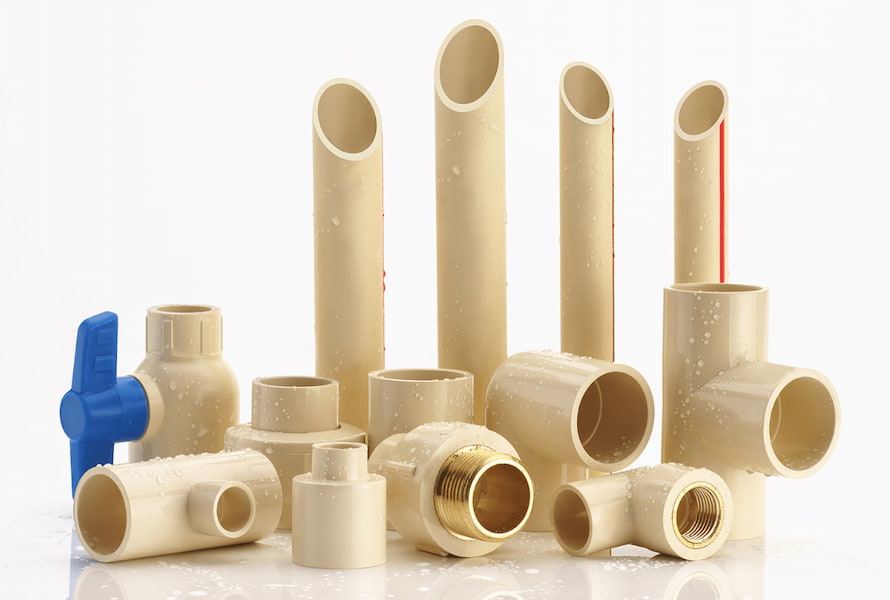
CPVC (Chlorinated Polyvinyl Chloride) and PVC (Polyvinyl Chloride) are two common types of plastic materials used in various applications. While they may seem similar at first glance, there are important differences between the two that can impact factors such as temperature, chemical resistance, durability, and cost. What is the difference between PVC and CPVC? In this article, we will explore the differences between CPVC and PVC, and help you determine which material is best suited for your specific needs.
I. What is PVC?
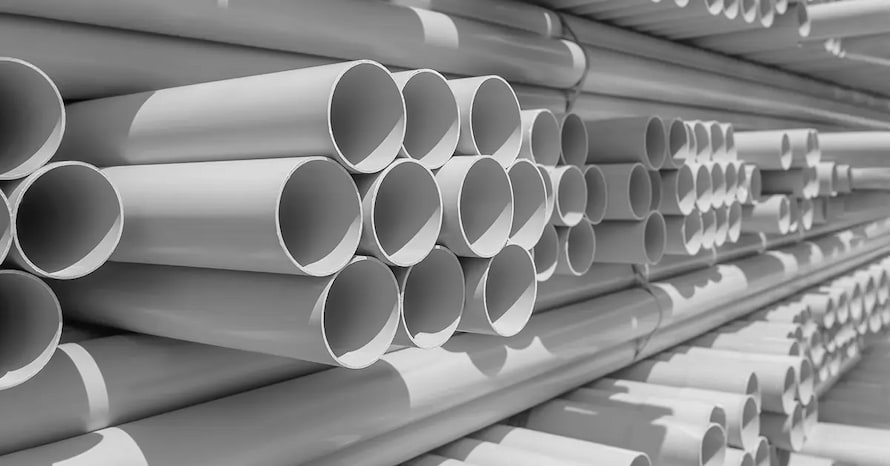
Definition: PVC stands for polyvinyl chloride - one of the thermoplastic polymers that is used the most often all over the globe (next to only a few more widely used plastics like PET and P.P.).
- Technical Name: Polyvinyl Chloride (PVC)
- Chemical Formula: (C2H3Cl)n
- Melting point: 100 to 260 °C (373 to 533 K; 212 to 500 °F
Properties
- Hardness: Rigid PVC has a high hardness and durability rating.
- Strength: The tensile strength of rigid PVC is outstanding.
- Ductility: By adding plasticizers like phthalate, PVC may be made more flexible and softer, and bent to meet requirements.
- Flame-retardant: Since PVC goods include a lot of chlorine, they self-extinguish.
Types
There are two main types of polyvinyl chloride: rigid and flexible. Rigid PVC is a versatile material that may be used in plumbing and construction since it is light, affordable, and long-lasting. Meanwhile, flexible PVC is used for rubber substitutes and electrical wire insulation.
Applications
- Packaging: Shrink wrap, blister packs, and clamshell packaging.
- Healthcare: Tubing, bags, catheters, and other medical devices.
- Automotive: Upholstery, dashboards, door panels, and electrical components.
- Clothing: Raincoats, boots, and other waterproof apparel.
- Construction: Pipes, fittings, roofing sheets, flooring, wall panels, doors, windows, and electrical cables.
II. What is CPVC?
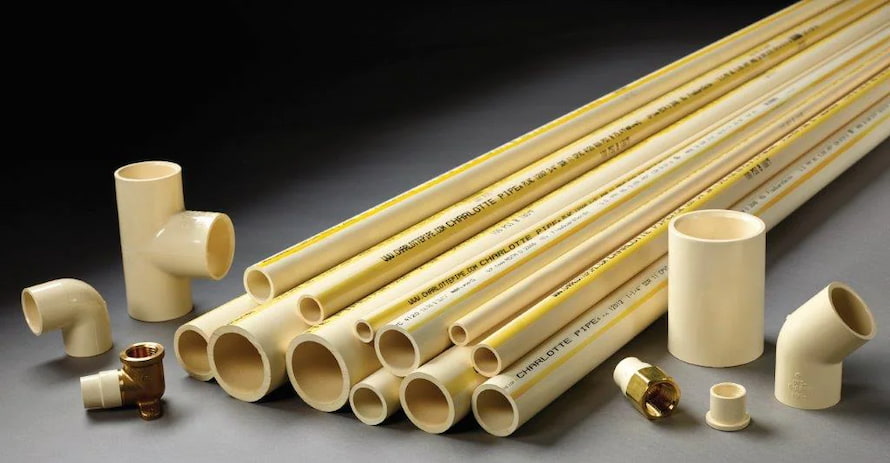
Definition: Chlorinated polyvinyl chloride (CPVC) is a thermoplastic produced by the chlorination of polyvinyl chloride resin energy.
- Technical name: Polychlorethylene
- Chemical formula: (C9H11Cl7)n, for 67% Cl polymer
- Density (ρ): 1.56 g/cm3
- Melting temperature (Tm): 150 °C
Properties:
-
Heat resistance: At temperatures higher than PVC, often higher by 40–50 °C (72–90 °F), CPVC can tolerate corrosive water.
- Mechanical characteristics: CPVC has a high degree of ductility, which enhances flexure and crush resistance.
- Insulation: Since CPVC is a thermoplastic, it insulates better than copper pipes.
- Fire properties: When not exposed to a direct flame, CPVC is normally exceedingly difficult to ignite and self-extinguishes.
Applications
CPVC pipes and plumbing are now the most widely used CPVC items. Domestic hot and cold potable water supply, chemical synthesis and transfer, agricultural fertilizers and irrigation, as well as drain, waste, and venting pipes, all use CPVC plumbing.
In addition, CPVC is also used in applications such as:
- Fire sprinkler systems: Residential and commercial fire sprinkler systems.
- HVAC systems: Used in heating, ventilation, and air conditioning (HVAC) systems.
- Automotive parts: Fuel lines, air conditioning hoses, and radiator tanks.
- Medical devices: CPVC medical devices are used in a variety of applications such as blood transfusions, IV lines, and surgical procedures.
III. What is the difference between CPVC and PVC?
1. Characteristics and Properties
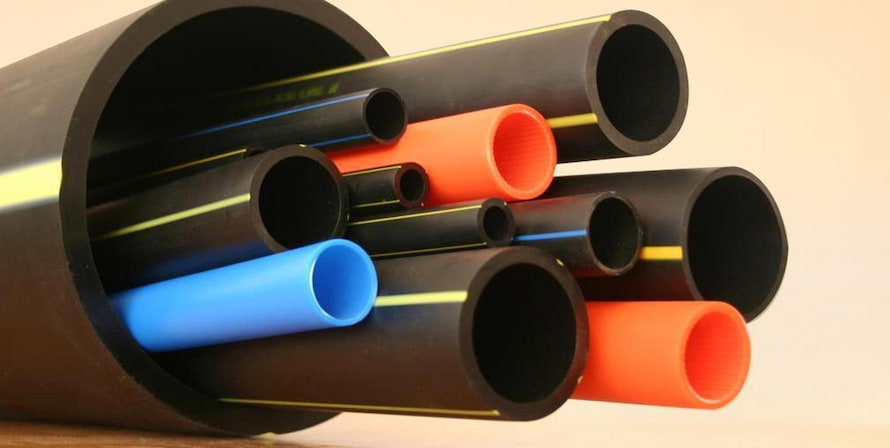
Temperature Tolerant
Because of the change in composition, CPVC can withstand a broader range of temperatures. The ASTM standard enables PVC to be used in applications not going beyond 140 degrees F. Meanwhile, products made from CPVC such as pipe have a recommended maximum operating temperature of 200°F. CPVC operational temperatures can satisfactorily range from 200°F to 230°F, given proper conditions of pressure and chemical suitability.
Because of this, many building codes stipulate that CPVC rather than PVC be used in hot water applications.
Chemical Resistance
CPVC is known for its superior chemical resistance compared to PVC. CPVC is highly resistant to acids, bases, and other corrosive chemicals, including many that can damage or degrade PVC over time. This property helps CPVC become the preferred choice for applications in chemical processing plants or where there is a risk of chemical exposure. PVC, on the other hand, is more susceptible to chemical attacks and may degrade over time when exposed to certain chemicals.
Mechanical Resistance
The addition of chlorine to CPVC increases its heat tolerance, yet alters the material's strength. CPVC and PVC are both relatively sturdy materials, however, due to CPVC's higher degree of hardness, the latter is more likely to crack. CPVC is more brittle than PVC, which means it may be deformed or fractured with less effort. On the other hand, CPVC is more flexible than PVC.
Colors
Know your intended usage for the CPVC and the appropriate size method before purchasing. Another hint comes from color. Frequently CTS CPVC is a light yellowish color, while schedule 80 CPVC (NPS) is a light gray color. PVC fittings and pipes are often only offered in white or dark gray.
2. Common applications
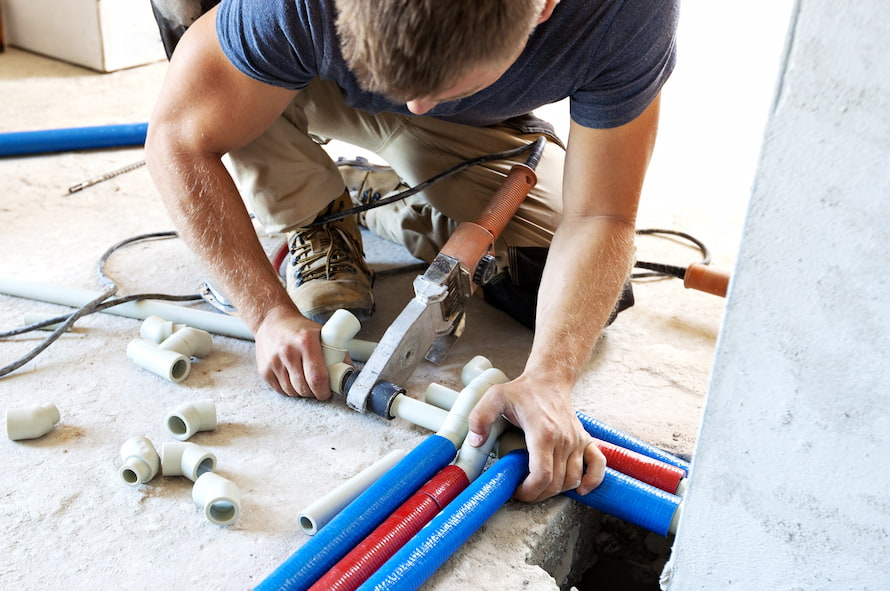
|
Application
|
CPVC
|
PVC
|
|
Water piping systems
|
Suitable for hot water applications due to high temperature resistance, more durable and resistant to corrosion and scale buildup compared to PVC
|
More commonly used for cold water applications due to low cost and ease of installation
|
|
Chemical processing
|
Superior chemical resistance compared to PVC, can withstand high temperatures
|
Not be suitable as it can be attacked by some chemicals
|
|
Fire sprinkler systems
|
Commonly used due to high temperature resistance and durability
|
Not be suitable as it can soften and deform at high temperatures
|
|
Industrial piping systems
|
High mechanical strength and resistance to stress cracking, more resistant to corrosion and scale buildup compared to PVC
|
More prone to cracking under stress compared to CPVC
|
|
Plumbing systems
|
May be preferred if high temperature or chemical resistance is required, more durable and resistant to scale buildup compared to PVC
|
Popular choice if low cost, ease of installation, and availability is important factors
|
|
Electrical conduit
|
May not be as effective as an insulator compared to PVC
|
Commonly used due to insulation properties and durability
|
While both materials have their advantages and disadvantages, CPVC is often preferred for applications that require high temperature or chemical resistance, while PVC is more commonly used in applications where low cost and ease of installation are important factors.
3. Recyclability and sustainability

Recyclability
PVC is relatively easy to recycle. It is typically recycled through mechanical recycling, which involves shredding the plastic material into small pieces, melting it down, and then reforming it into new products.
CPVC, on the other hand, is less commonly recycled than PVC because it contains chlorine, which can make it more difficult to recycle using conventional recycling methods. While CPVC can be recycled through specialized processes, such as thermal depolymerization or chemical recycling, these processes are not yet widely available.
Sustainability
PVC has been criticized for its potential environmental impacts, including the release of toxic chemicals during manufacturing and disposal. However, PVC is a relatively inexpensive and versatile material, which has led to its widespread use in various industries.
CPVC, on the other hand, is generally considered to be a more sustainable alternative to PVC because it has a lower environmental impact. CPVC is made using a chlorination process, which reduces its carbon footprint and requires less energy to manufacture than PVC.
4. Cost
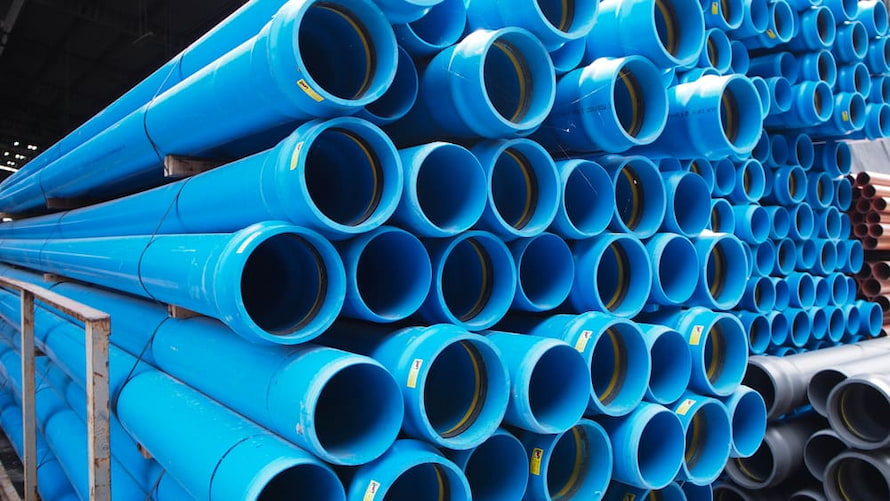
PVC is generally less expensive than CPVC due to its lower manufacturing costs. PVC is a thermoplastic that is made by polymerizing vinyl chloride, which is a relatively inexpensive raw material. The production process for PVC is also straightforward, which contributes to its lower manufacturing costs. PVC's affordability helps it become an attractive option for many applications, such as construction, plumbing, and packaging.
CPVC, on the other hand, is typically more expensive than PVC due to its specialized manufacturing process. CPVC is a modified version of PVC that has been treated with additional chlorine, which enhances its heat resistance and chemical resistance. This additional treatment increases the production costs of CPVC compared to PVC. Additionally, the market demand for CPVC is lower than that of PVC, which can also contribute to its higher cost.
However, CPVC's specialized characteristics, such as its improved heat resistance and chemical resistance, make it a valuable alternative to PVC, even if it comes at a higher cost. The cost difference between PVC and CPVC should be considered when selecting the appropriate material for a specific application, along with other factors such as performance requirements and environmental considerations.
5. Can PVC & CPVC be used together?
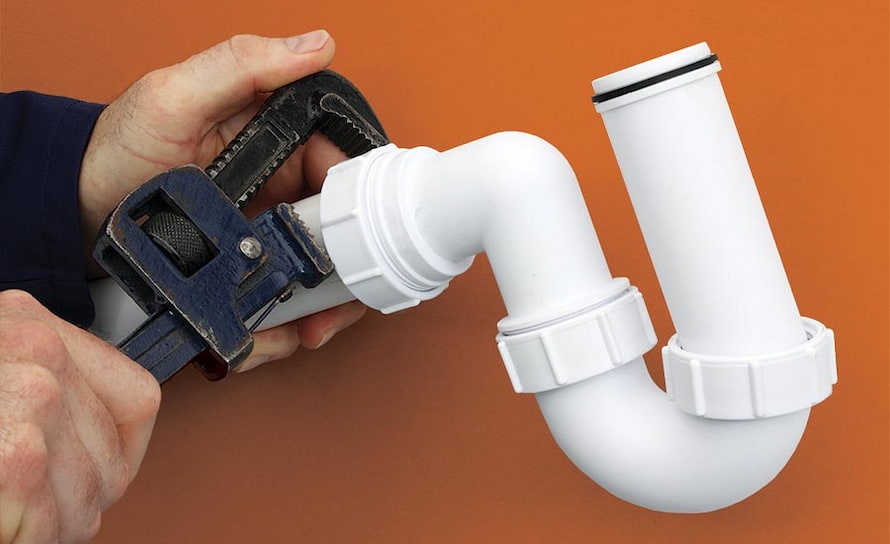
While PVC (Polyvinyl Chloride) and CPVC (Chlorinated Polyvinyl Chloride) are both types of plastic materials that are used in various applications, they are NOT typically used together in the same system or application. This is because PVC and CPVC have different chemical structures and properties, which can lead to incompatibility issues when used together. Additionally, the use of different types of cement and glue can also affect the compatibility of PVC and CPVC.
It is generally recommended to use either PVC or CPVC exclusively in a given application or system, rather than using them together. This helps to ensure compatibility and prevent potential problems that could arise from using incompatible materials together.
In short, PVC vs CPVC are two types of plastic materials that have different properties and are used in various applications. While PVC is widely used due to its versatility, ease of processing, and low cost, CPVC offers additional benefits such as higher heat resistance, greater tensile strength, and improved chemical resistance. Despite these differences, PVC and CPVC are not typically used together in the same system or application due to compatibility issues that can arise from their differences in chemical structures and properties. Therefore, it is important to carefully consider the properties and requirements of each material before selecting one for a given application to ensure compatibility and prevent potential problems.